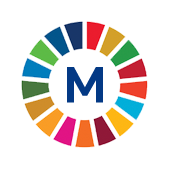 6.2.1a Proportion of population using safely managed sanitation servicesMetadataPeriod: AnnualYear: 2025 |
 6.2.1a Proportion of population using safely managed sanitation servicesMetadataPeriod: AnnualYear: 2025 |
| METADATA |
| Indicator information |
| Definition and methodology |
| Data source type and data collection method |
| Notes |
| ID of global indicator |
| Metadata update |
| Global metadata |
| Indicator information | Top |
| Indicator | |
6.2.1a Proportion of population using safely managed sanitation services | |
| Global indicator name | |
6.2.1 Proportion of population using (a) safely managed sanitation services and (b) a hand-washing facility with soap and water | |
| Target | |
6.2 By 2030, achieve access to adequate and equitable sanitation and hygiene for all and end open defecation, paying special attention to the needs of women and girls and those in vulnerable situations | |
| Goal | |
Goal 6. Ensure availability and sustainable management of water and sanitation for all | |
| Definition and methodology | Top |
| Definition | |
The proportion of the population using safely managed sanitation services is defined as the proportion of the population using an improved sanitation facility which is not shared with other households and where excreta are safely disposed of in situ or removed and treated off-site.
‘Improved’ sanitation facilities are those designed to hygienically separate human excreta from human contact. These include wet sanitation technologies such as flush and pour flush toilets connected to sewers, septic tanks or pit latrines, and dry sanitation technologies such as dry pit latrines with slabs, ventilated improved pit latrines and composting toilets.
For the purposes of SDG monitoring, treatment of wastewater and faecal sludge is assessed based on the treatment plant design technology, using categories defined by the System of Environmental-Economic Accounting (SEEA) and the International Recommendations for Water Statistics and following a laddered approach (primary, secondary and tertiary treatment).
Wastewater and faecal sludge receiving secondary or higher levels of treatment are considered ‘safely managed’. Primary treatment is not considered safely managed, unless the effluent is discharged in a way that precludes further human contact (e.g. through a long ocean outfall). If data are available for conventional classes (primary, secondary, tertiary, advanced) as well as for ambiguous categories (e.g. “other”), ambiguous categories are generally not considered as safely managed. Where treatment classes are not specified (e.g. “treated”) the JMP assumes at least secondary treatment but seeks clarification during country consultations. Treatment of excreta in faecal sludge treatment plants is classified as safely managed if both the liquid and solid fractions are treated. Excreta stored in on-site storage containers can be safely treated and disposed of on-site (‘safe disposal in situ’) if pit latrines and septic tanks are not emptied and excreta are contained (remain isolated from human contact) such that solids degrade within the container through physical and biological processes, and liquid effluent connects to an infiltration system such as a soak away pit. Faecal sludge emptied from septic tanks and pit latrines and buried on-site in a covered pit is also counted as safely disposed of in situ. | |
| Methodological explanations | |
The WHO/UNICEF Joint Monitoring Programme (JMP) compiles national data on sanitation from a wide range of different data sources.
Household surveys and censuses provide data on use of types of basic sanitation facilities, while information on emptying and disposal of waste from on-site facilities and the treatment of wastewater from sewer connections are increasingly available through a combination of household surveys and administrative sources including regulators. | |
| Method of calculation | |
The percentage of the population using safely managed sanitation services is calculated by combining data on the proportion of the population using different types of basic sanitation facilities with estimates of the proportion of faecal waste which is safely disposed in situ or treated off-site.
The JMP estimates the proportion of population using improved sanitation by fitting a linear regression model to all available and validated data points within the reference period, starting from the year 2000. | |
| Unit of measure | |
% | |
| Available disaggregation | |
Type of settlements | |
| Territorial level | |
Republic of Serbia | |
| Data source type and data collection method | Top |
| Data source | |
The WHO/UNICEF Joint Monitoring Programme for Water Supply, Sanitation and Hygiene (JMP), Institut for Public health Milan Jovanović Batut and Statistical Office of the Republic of Serbia | |
| Periodicity of data collection | |
Annual | |
| Notes | Top |
| ID of global indicator | Top |
C060201 | |
| Metadata update | Top |
| 5/6/2025 | |
| Global metadata | Top |
https://unstats.un.org/sdgs/metadata/files/Metadata-06-02-01a.pdf https://unstats.un.org/sdgs/metadata/files/Metadata-06-02-01b.pdf
| |